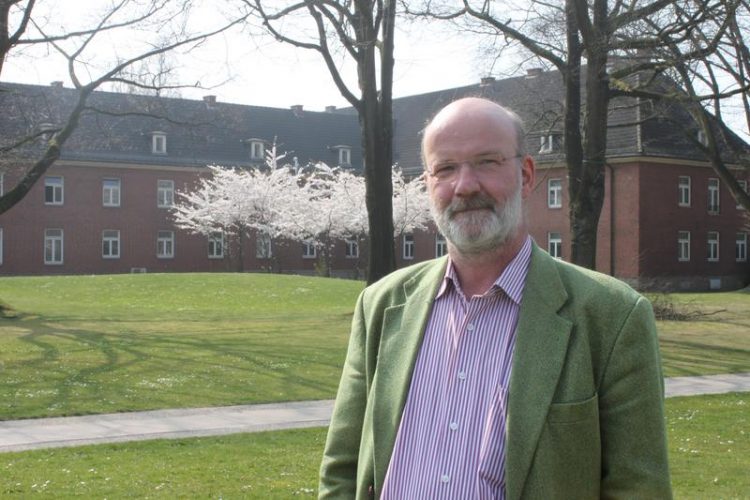Higher Tumor Rates by Exposure to Electromagnetic Fields

Prof. Dr. Alexander Lerchl, Professor of Biology at Jacobs University Copyright: Jacobs University
In a study with mice, Alexander Lerchl, Professor of Biology at Jacobs University, and his team could verify that carcinogen-induced tumor rates were significantly higher when the animals were exposed to electromagnetic fields such as those emitted from mobile phones.
“The effects on liver and lung tumors, as reported by ITEM in 2010, were fully confirmed,” says Prof. Lerchl who conducted the investigation together with colleagues from Jacobs University and from the University of Wuppertal. “In addition we found a significantly elevated rate of lymphoma due to exposure,” the scientist explains. Furthermore, some of the effects were seen at levels below the exposure limits for the general population.
Alexander Lerchl, however, does not interpret the new data as being a proof for cancer induction through the use of mobile phones.
“Our results show that electromagnetic fields obviously enhance the growth of tumors. The assumption that they can cause cancer has not been proven so far,” Prof. Lerchl emphasizes, who has published a large number of studies on the topic. Additional research is necessary to clarify the reasons for the latest results findings.
“We can clearly demonstrate the effects. Now new studies must aim at explaining the underlying mechanisms”, Prof. Lerchl concludes.
For questions, please contact:
Prof. Dr. Alexander Lerchl | Professor of Biology
Tel.: +49 421 200 3241 | a.lerchl@jacobs-university.de
Weitere Informationen:
http://www.sciencedirect.com/science/article/pii/S0006291X15003988 – new study by Prof. Dr. Alexander Lerchl from Jacobs University Bremen, Germany
Media Contact
All latest news from the category: Life Sciences and Chemistry
Articles and reports from the Life Sciences and chemistry area deal with applied and basic research into modern biology, chemistry and human medicine.
Valuable information can be found on a range of life sciences fields including bacteriology, biochemistry, bionics, bioinformatics, biophysics, biotechnology, genetics, geobotany, human biology, marine biology, microbiology, molecular biology, cellular biology, zoology, bioinorganic chemistry, microchemistry and environmental chemistry.
Newest articles

First-of-its-kind study uses remote sensing to monitor plastic debris in rivers and lakes
Remote sensing creates a cost-effective solution to monitoring plastic pollution. A first-of-its-kind study from researchers at the University of Minnesota Twin Cities shows how remote sensing can help monitor and…

Laser-based artificial neuron mimics nerve cell functions at lightning speed
With a processing speed a billion times faster than nature, chip-based laser neuron could help advance AI tasks such as pattern recognition and sequence prediction. Researchers have developed a laser-based…

Optimising the processing of plastic waste
Just one look in the yellow bin reveals a colourful jumble of different types of plastic. However, the purer and more uniform plastic waste is, the easier it is to…



